Prostatitis is the inflammation of the prostate gland.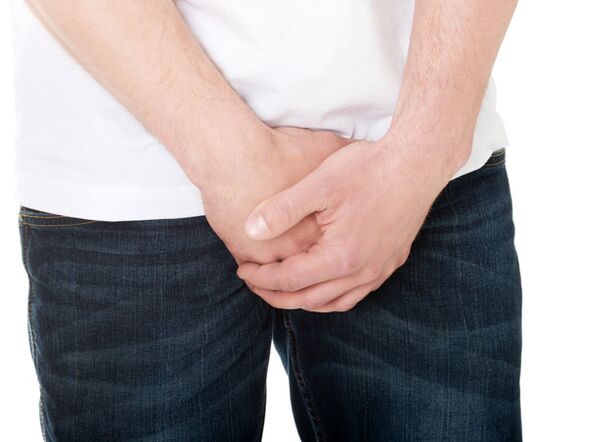 It occurs more often in men aged 25 to 50 and over.Pain and false urination, as well as the general sense of discomfort, are the main symptoms.Often, the disease is accompanied by fever and chills.
It occurs more often in men aged 25 to 50 and over.Pain and false urination, as well as the general sense of discomfort, are the main symptoms.Often, the disease is accompanied by fever and chills.
Depending on the cause of the occurrence, the bacterial and abacterial form of the disease is released.Abacterial prostatitis with a 90% share is the most common inflammation of the prostate.According to estimates, around 50% of all men are faced with this problem, at least once in a lifetime.
The main reasons for development:
- E. coli;
- sexually transmitted infections, including gonorrhea, chlamydia;
- nervous system disorder;
- Reduce body protection functions.
Presumably, the risk of developing the disease increases with the chronic poisoning of the body with alcohol, morphine and nicotine.Studies in the field of modern Andrology argue that among the predisposing factors, there are wounds in the crotch, for example, cyclists and motorcyclists.The circumstances listed contribute to the exacerbation of latent inflammation in the tissues of the organ.
The decisive importance in the development of pathology is assigned to stagnant phenomena in the tissues.In the event of violation of the hair blood circulation, swelling and exudation of the tissues occur, which is responsible for the creation of acceptable conditions for the occurrence of an infectious process.
The structure and functions of the prostate gland
The prostate is the male genital organ, which is located under the bladder.The protruding gland the size of a chestnut weighs 20 grams and surrounds the urethra and two ejaculation channels.They direct the secret of testicles, appendages and seed bubbles in the urethra during ejaculation.
The protruding gland produces the secret if called, which is also part of the seed fluid (ejaculate).It stands out in the urethra when the sperm made the effort of the sperm and support its transport.About 70% of the ejaculated liquid during orgasm is produced by a prostate.Liquid is an alkaline secretion that mixes and also protects sperm from the acid vaginal environment, increases their mobility and facilitates their flow in the egg.Due to the anatomical location of the prostate, the disease often causes symptoms such as painful urination.
Types of prostatitis
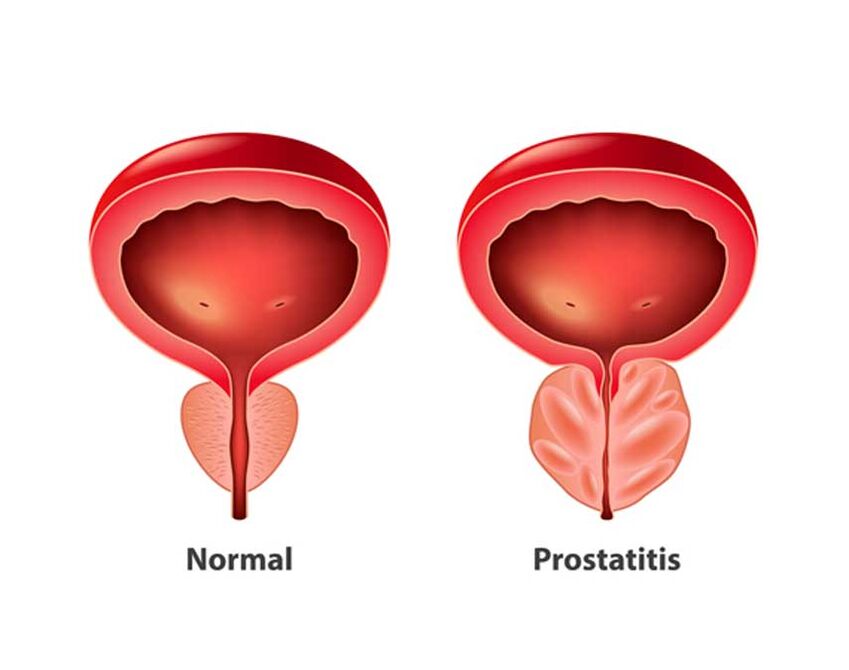
With a bacterial lesion of the prostate, two forms of current are distinguished:
- Sharp.Inflammation is caused by bacteria that go up through the urethra and colonize the prostate.These are Escherichia coli bacteria who live in the intestines.Other pathogens include enterobacteria and mycobacteria.Inflammation caused by bacteria represents around 10% of cases.
- Chronic.Uncultivated bacterial infection can develop in chronic infection.This is the case when complaints last more than 3 months.
Chronic prostatitis is diagnosed mainly in the elderly.In the absence of therapy in a timely manner, infertility develops in around 40% of cases.This is due to the fact that the body no longer develops a sufficient amount of secret, which provides the mobility of sperm.
Table - Types and symptoms of prostatitis in men
| Name | Particularities | Symptoms |
| Abacourish | The base of the emptying is based.The urine enters the conduits, following which metabolic products (bases of uric acid, purine and pyrimidine) are deposited in its tissues, which leads to inflammation and a formation of stones. |
|
| Catarrhale | Inflammation is located in separate fractions of the gland, which leads to a change in the structure of the submucosal layer and the mucosa of the introductory canals.In the follicles, stagnant phenomena occur, which are heavy with an additional progression of the disease. |
|
| Folicular | It is accompanied by moderate hyperthermia or a typical subfribtus.The focal abolition of all damaged areas occurs. |
|
| Parenchymatic | Several lesions are present.Most of the parenchyma, interstitial tissues are involved in the pathological process.With the accumulation of several abscesses, an abscess is formed. |
|
Inflammation can also occur without symptoms.It is within the framework of a preventive examination in the content of an increased number of leukocytes in sperm.
Current characteristics
Prostatitis has several stages of development, each of which is characterized by certain symptoms:
- Step I. It is characterized by the appearance of the inflammatory process and the improved functioning of the prostate.The general condition remains normal, with the exception of the appearance of the clinical image of the disease.The first step lasts 1-3 years.At this stage, a complete remedy is possible with the help of medicines.
- STEP II.Symptoms calm down.After a while, a violation of erection and irritability occurs.In sex, there may be no ejaculation.There is weakness and pain in the perineum.It is accompanied by a violation of the structure of the organ, which is heavy with supply of altered blood.Therapy is carried out using antibiotics, immunomodulators and physiotherapy.
- Step III.The last step in the development of the disease, which is accompanied by a necrosis of the tissues.The scars appear on it, which begin to press the internal organs.The iron is wrinkled and distorted, which is heavy with dysfunctions of the genitorerinary system.There is acute pain during urination and signs of radiculitis are improved.The patient must be under constant medical control.
In advanced cases, the disease is completely removed.Therefore, do not launch diseases.It is best to consult a doctor when the first symptoms appear, which can be adjusted to medication.
Prostatitis symptoms
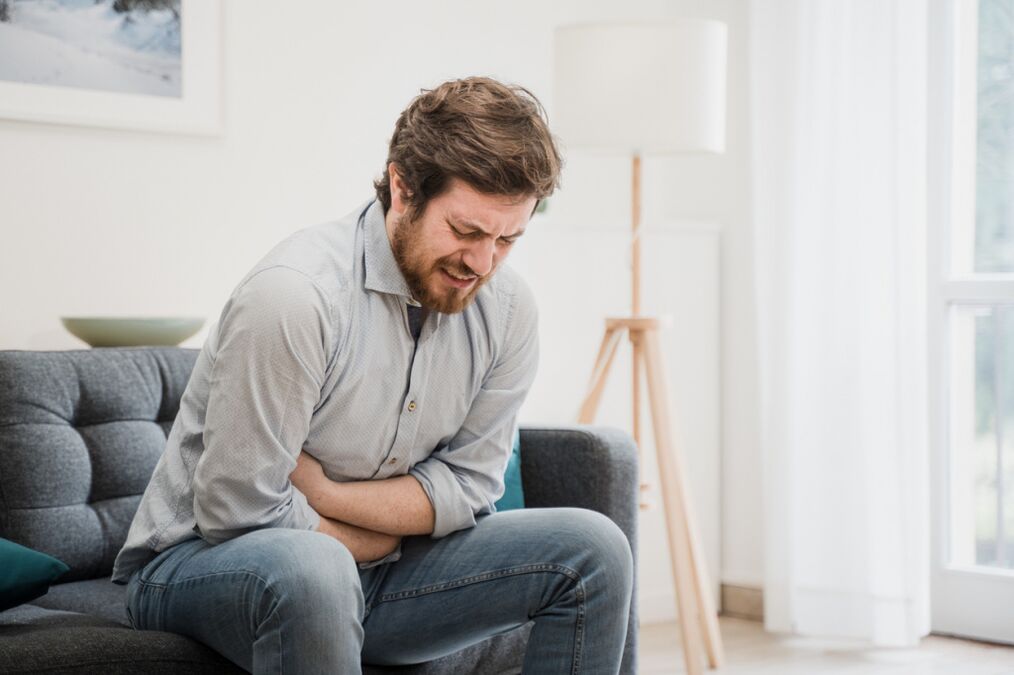
The manifestations are the same for all types of diseases, with the exception of fever, which is only present with the bacterial origin.Signs of prostatitis are divided conditionally into 2 groups:
- Of the uric plant apparatus - painful and frequent urination, pain in the bottom of the abdomen, an incomplete feeling of emptying;
- On the part of the sexual function - loss of orgasm, premature ejaculation, weak erection, pain in the rectum.
There is also an increase in nervousness and anxiety caused by the focus on your condition.This can be accompanied by a change in character, resentment and irritability.
Possible complications
The absence of a timely diagnosis and treatment leads to the following complications:
- Urine delay.The patient is unable to empty the bladder independently, which is accompanied by intense pain.There are cases of gap.In order to avoid complications, urine is excreted through a catheter.
- Abscess.Pus accumulates, which is accompanied by high body temperature, chills and intense pain in the perineum.High dose antibiotics and surgery are necessary.
- Blood infection (urosepsy).The bacteria enter the blood circulation and spread throughout the body.
If the disease takes place chronically and without adequate correction of drugs, a man can become unsuccessful.Only effective therapy helps get rid of these complications.
Diagnosis
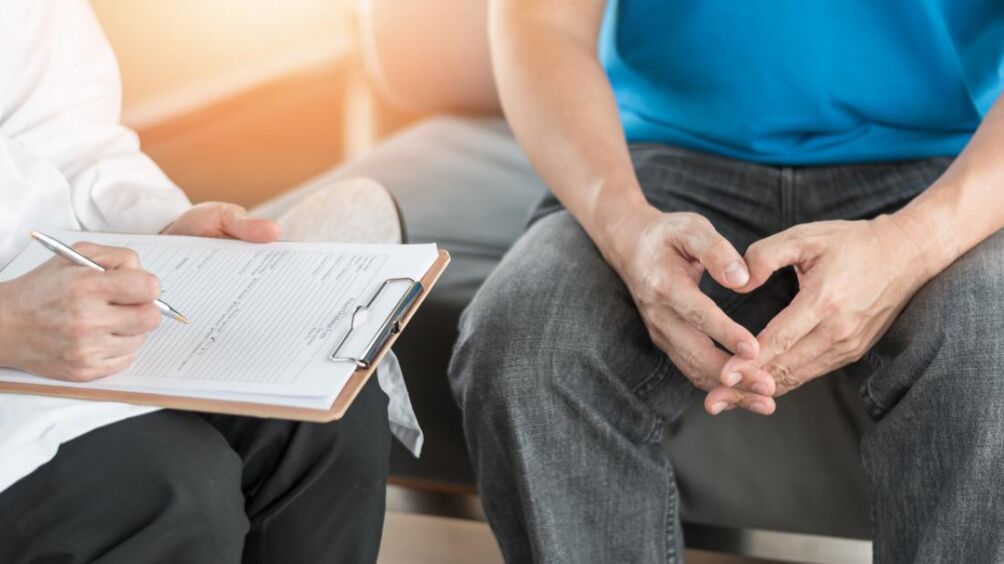
If the first signs and symptoms of prostatitis appear, you should consult a doctor who will establish a diagnosis and prescribe an appropriate therapy system.
The main stages of the diagnosis:
- Anamnesis history (studies of symptoms);
- palpation of unguinal lymph nodes;
- Larger smear;
- transrectal ultrasound;
- laboratory blood test;
- A sample of sperm and urine samples to identify the possible type of pathogenic microorganisms.
Based on the results obtained, therapy is prescribed.In advanced cases, surgical intervention cannot happen.Among the main indications for surgical intervention, an abscess, an acute and acute delay in the urine should be distinguished.
Prostatitic treatment
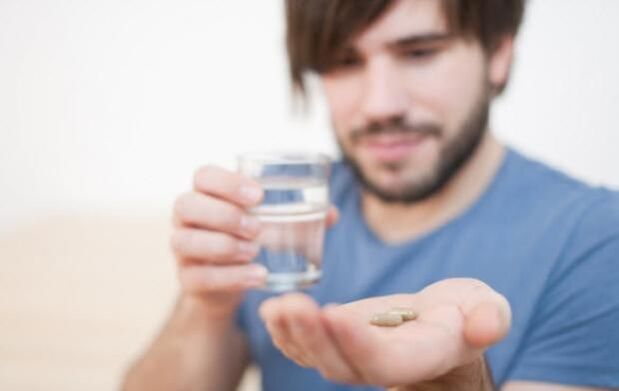
The conservative therapy scheme is only prescribed after having determined the pathogen.Self-medication in this case is unacceptable because it can cause irreversible consequences for health.
The most effective drugs for prostatitis:
- N ° 1 - Extract from creeping palm fruit.
Phytopreparation is prescribed for the prostate lesion.Designed on the basis of extract from the fruits of freedom.It does not cause hormonal imbalance and does not affect the hypothalamic-pituitary system.
- N ° 2 - Aminodihroftalazindion sodium.
The anti-inflammatory and immunomodulating drug regulates the functional-metabolic activity of cellular structures of adaptive and congenital immunity.Suppositories are prescribed in complex therapy for adults and children aged 12 and over.Effectively makes manifestations of the inflammatory process, reducing the symptoms of the disease.
- N ° 3 - Prostate.
The drug is widely used in urological diseases.This is the most effective treatment of chronic prostatitis.Moderately reduces the size of the prostate gland, improving urine processes.Available in the form of rectal tablets and suppositories.
- N ° 4 - Passage prostate The shape of suppositories and intramuscular injections.
Designed to stop signs of prostatitis and the treatment of disease in men.The drug of animal origin relieves the swelling of the gland, restores the secretory functions, stimulating muscle tone.
- N ° 5 - Nitrofurantine.
Antibacterial tablets have an antimicrobial effect.Quickly eliminates inflammation, eliminating genitorerinary infections.
- N ° 6 - Tsiprofloxacin.
Belongs to the fluoroquinolons group.Effectively makes complicated and simple forms of the disease.Helps eliminate existing violations.
- N ° 7 - Broamide Azoximer.
Immunostimulant agent based on azoximer bromide.Relieves inflammation and has an antioxidant and detoxifying effect.Increases body resistance to various types of infections.Available in the form of a solution for injection.
- N ° 8 –Dephym.
It has a wide range of action, inhibiting the cellular membrane of the pathogen.Contains the character.Used in complex therapy.
- N ° 9– Josamycine.
A macroline antibiotic based on Josamycine Propionate.It has a bacteriostatic effect by inhibiting the synthesis of protein bacteria.It is produced in the form of granules for the preparation of a suspension and tablets.
- N ° 10– DOXYCYCLINE.
The antibiotic of the Macrolide group has a high activity in relation to intracellular microorganisms.It is prescribed for mixed infections of the genitals and urinary tract.
To increase the effectiveness of drugs, glands massage is indicated.The procedure has a complete action - exploits the secret accumulated in the conduits to remove from the body.
Prostatitic prevention

To exclude the development of the disease, it is recommended to avoid hypothermia, to observe a diet and to have a regular sex life.It is also important to exclude sexually transmitted diseases.
A favorable forecast depends on several factors:
- Diagnostic in time;
- trigger factor;
- form of disease;
- age;
- The general condition of the patient.
With timely detection and adequate treatment, the prognosis is always positive.Otherwise, consequences such as chronic inflammation and other complications may occur.You should visit the urologist at least once a year.With the relapse of prostatitis, preventive visits to the doctor are recommended every 6 months.

























